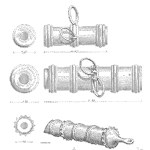
In the analysis of repairable equipment, one may need to make the assumption of constant failure rate. In my opinion, anytime one wants to make the assumption of constant failure rate, it should be validated. [Read more…]
Your Reliability Engineering Professional Development Site
by Fred Schenkelberg 7 Comments

In the analysis of repairable equipment, one may need to make the assumption of constant failure rate. In my opinion, anytime one wants to make the assumption of constant failure rate, it should be validated. [Read more…]
by Fred Schenkelberg 4 Comments

An error that I see on occasion is the use of statistical confidence with a goal or target value. For example, we want 95% reliability at five years with 90% confidence. What does that mean? [Read more…]
by Fred Schenkelberg Leave a Comment

Hypothesis testing permits us to compare two groups of items and determine if there is a significant difference or not. There are many types of hypothesis tests depending on the specific question, type of data, and what is or is not known when designing the test. [Read more…]
by Fred Schenkelberg 2 Comments

Let’s work a sample size problem.
A random sample size, n, is to be taken from a large population having a standard deviation of 1″. The sample size is to be determined so that there well be a 0.05 risk probability of exceeding a 0.1″ tolerance error in using the sample mean to estimate μ. Which of the following values is nearest the required sample size?
a. 42
b. 106
c. 203
d. 384 [Read more…]
by Fred Schenkelberg Leave a Comment

I recently received a question concerning what sample size to use when assessing call center calls. Not a lot of information in the request, so my answer was rather general. And, thought it might provide some insight to others facing sample size questions of their own. [Read more…]
by Fred Schenkelberg Leave a Comment

A foundational element of probability and statistics is counting. How many ways could something occur? A simple example is a pass or fail criteria, thus when evaluating a product there are two possible outcomes. [Read more…]
by Fred Schenkelberg 7 Comments

In those situations where we sample without replacement, meaning the odds change after each sample is drawn, we can use the hypergeometric distribution for modeling. Great, sounds like statistician talk. So, let’s consider a real situation. [Read more…]
by Fred Schenkelberg 2 Comments

Let’s say the results of software testing averaged three defects per 10,000 lines of code. The criteria for release is 90% probability of 5 or fewer defects per 10k lines.
If this product ready for release?
The Poisson distribution is appropriate here as it is useful for modeling defects per unit, count per area, or arrivals per hour. If the data, in this case, the defect count per lines of code to be modeled by the Poisson distribution, the probability of an occurrence (defect in this case) has to be proportional to the interval (lines of code in this case). Also, the number of occurrences (defects) per interval must be independent (more on statistical independence in another post). [Read more…]
by Fred Schenkelberg 17 Comments

The lognormal distribution has two parameters, μ, and σ. These are not the same as mean and standard deviation, which is the subject of another post, yet they do describe the distribution, including the reliability function. [Read more…]

This week in our CRE Test Prep class/webinar we covered the Advance Statistics section of the CRE Primer, and I felt great that we stayed an hour more going over these though topics.
One of the topics was Hypothesis Testing.
Let me share some of the questions that arose during that section. [Read more…]

Last week during our CRE Test Prep class, we were covering the Basic Statistics section in the CRE Primer and had several questions regarding Confidence Limits for Reliability.
All of them were fair questions, and when students are asking these types of questions, the class gets better… [Read more…]
by Fred Schenkelberg 5 Comments

There a few different ways to sample a lot (or group) of material to determine if it has an acceptably low failure rate (or proportion that are considered ‘bad’). The following is an example of the sequential sampling method, which happens to be rather efficient by generally using the fewest samples for the same risk protection. [Read more…]
by Fred Schenkelberg 2 Comments

First the Question:
Fred,
Early in the FMEA lecture you worked through a homework problem and you mentioned that a cdf may not be linear (hence the reason for giving three points in a reliability goal). Can you give an example of two of things you’ve seen with non-linear cdf’s? I’ve only done limited reliability testing at this point, but everything I’ve done and every example I’ve ever seen have had linear cdf’s.
Thanks,
John
And, my response: [Read more…]
by Fred Schenkelberg 2 Comments

This is provided courtesy of Amanda at
Egerton Consulting Ltd
Visit our website at www.egertonconsulting.co.uk
<They have a great newsletter and worth subscribing. Fred> [Read more…]
by Fred Schenkelberg 25 Comments

Let’s say we have a product that most often fails for one major component. Let’s say a fan (it could be anything, and while I don’t have anything against fans, it’s easy to picture).
Ok, this fan has a data sheet with the classic reliability claim of 50,000 hours MTBF. For those that know about my disdain for MTBF (www.nomtbf.com) rest assured I’m not going to get into it here. The basic approach for estimating the number of failure during any [Read more…]